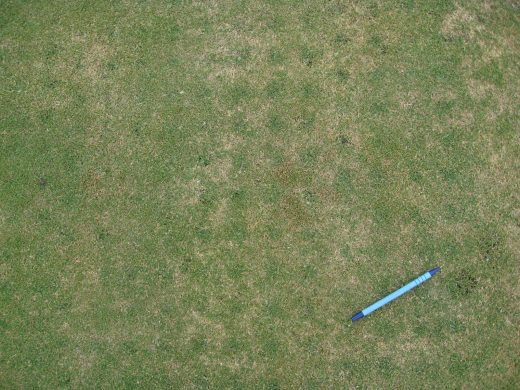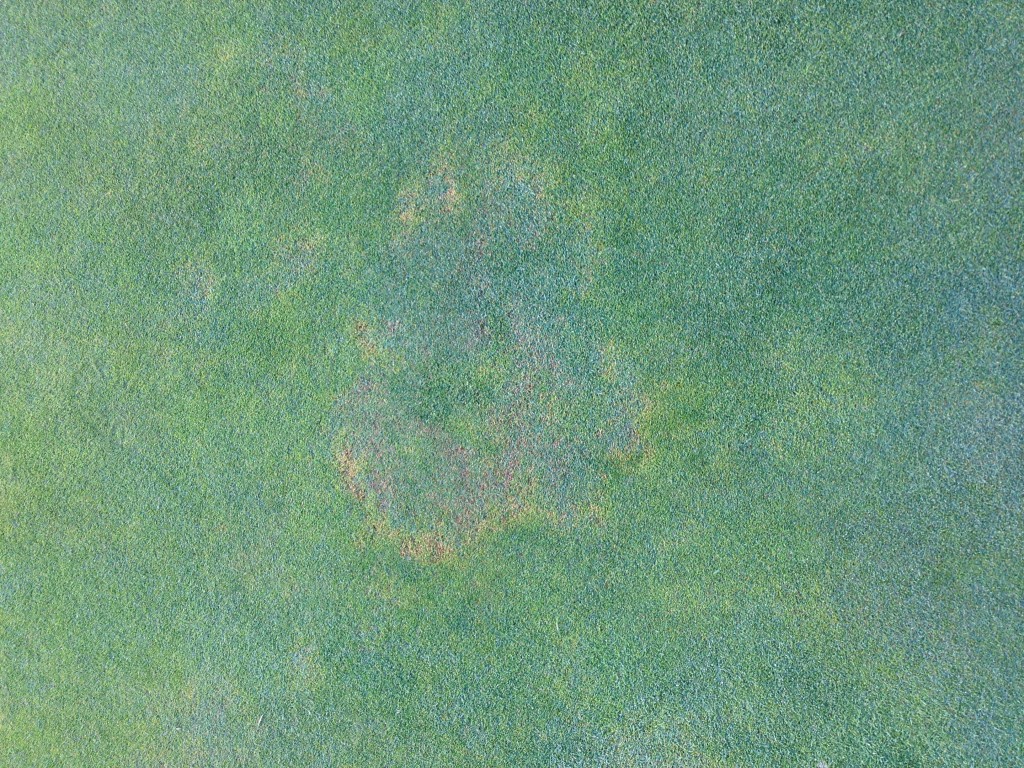
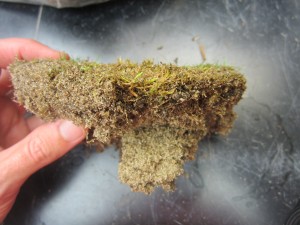
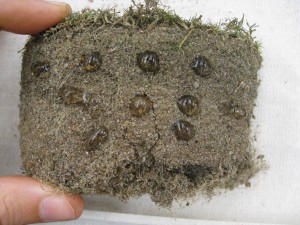
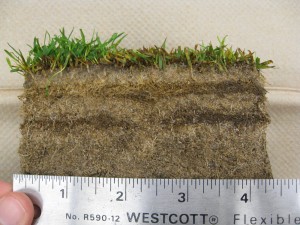
(Megan Kennelly, KSU Plant Pathology)
Losing turf and having a hard time getting it back? You aren’t alone.
It’s that time of year when turf can quickly fall into a tailspin, especially putting green turf. In the past 1-2 weeks, the number of emails, phone calls, and samples has really spiked. Jack Fry has provided a great article with tips about watering bentgrass elsewhere on the blog this week (see https://blogs.k-state.edu/turf/good-water-man…dsummer-stress/) and we have also linked to some excellent info from Dr. Miller in Missouri (https://blogs.k-state.edu/turf/more-info-on-physiological-decline-and-diseases/). Here, I will talk about a few other topics related to summer stress in turf. The next stretch of days are looking better with cooler highs as well as some nighttime lows in the 60’s, but the summer heat will probably be back before it’s gone for good.
Take a look at your rootzone.
If you are seeing turf decline above ground, take a peek above ground. I’ve seen a number of samples lately where the rootzone shows some clear underlying problems of organic matter buildup, thatch, or localized dry spot. I posted some example photos up above, at the top of this post. Your situation might not be as severe as those, but consider whether rootzone management could be the culprit behind the decline.
Summer heat is NOT the time to get aggressive with aerification, but put it on the agenda as a priority for fall. Throughout the fall and next spring keep on with the best agronomic practices you can manage. Build up those roots when the turf is growing its best, during fall and spring temps. Building up the turf is like putting money in the bank to rely on during the tough times (ie, July and August of 2016). In the meantime,with cooler spells (highs in the 80’s for a few days) you can consider some gentle aerification with solid tines but be careful! Try to do it during cooler parts of the day. Watch the turf and stop operation if the turf can’t take it and is getting torn up. We may be a long way from weather that will allow long-term recovery.
Does your profile look like a layer cake? Put some aerification and topdressing on the agenda for fall.
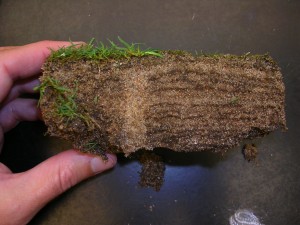
Look at the roots, since they’re supporting the shoots
In addition to problems in the soil profile itself, there have been multiple samples where the roots themselves are short, brown/mushy, and lacking root hairs. Sometimes there is a root pathogen thrown in there, sometimes there isn’t and it’s just physiological decline. Either way, the turf is suffering. How deep are your roots? Are there lots of root hair that cling to the sand, or does the sand slide right off? Try washing the soil off of a plug or two. Healthy roots are a creamy white. Brown and mushy? That’s not good. Before you start treating what looks like an above-ground problem, take a peak under the ground.
Check your roots and plan ahead to build more for NEXT summer
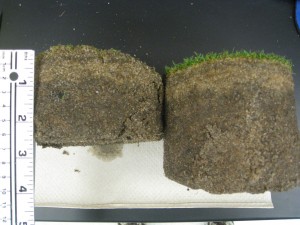
Brown and mushy is not good
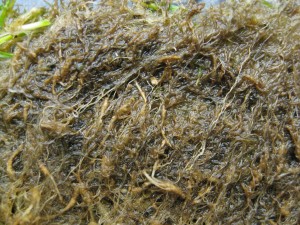
Hot underground = little growth to be found
When it’s 100 degrees outside in the air, we feel it. But, what the turf is really feeling is heat in the soil. When soil temps get into the upper 70’s and 80’s, root growth starts to shut down. When soil temps get into the 90’s, shoot growth stops too. What this means is that if you have any damage from disease/insects/stress, the turf will have a hard time growing out of it.
Use a soil thermometer to check your soil temps. It may not be pretty. The next week or so will give us a nice break, though.
Too much water can be worse than not enough.
If the soil is wet, it holds more heat so turf does not cool off well overnight, and this can really trigger a spiral of decline. Check Jack’s article for some tips (https://blogs.k-state.edu/turf/good-water-man…dsummer-stress/)
“I sprayed a fungicide and it didn’t seem to work”
Okay – let’s talk about diseases for a minute. You might be seeing dollar spot, brown patch, anthracnose, or Pythium root rot. For this discussion, let’s assume that you diagnosed it correctly and applied a great chemical at optimal rates with impeccable coverage.
But – you still might not see improvement. In fact, the disease could still get a little worse at first. Keep in mind, diseases have a latent period, and there could be more “infected” tissue than “symptomatic” tissue. So, for a couple of days, you could still see some symptoms develop from tissue that was actually colonized before you even knew it and got the product down.
Then, once that phase is done, even with the pathogen shut down and not infecting more tissue, you still have the problem that the turf isn’t growing well. That is, you might not have new green, good-looking turf for awhile even if the disease itself is under control. The aesthetics won’t improve until there is some new growth to fill in the damaged areas. Hopefully we will get some recovery in the next few days, with the milder temps.
As a final point on fungicides (and any product), be very careful to heed any warnings about use in hot weather. Test any new tank-mix concoctions on a small scale first to avoid unfortunate surprises. There are some excellent details about specific products in this publication: http://www2.ca.uky.edu/agc/pubs/ppa/ppa1/ppa1.pdf
Got Poa?
Annual bluegrass is pretty wimpy stuff. Here it is checking out in the heat:
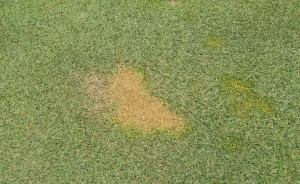
Poa triv is checking out, too. If you have problems with these pesky invaders try to reduce their populations for next year. It’s easy to forget about them a little bit when everything is green and happy, but there’s no ignoring them now.
Do you become a little more devout in August?
Over the years, I’ve heard several superintendents say variations of, “God grows the turf from Labor Day through Memorial Day. Then, it’s our job June, and July… and August? That’s when we start to pray.”
The next week or so is looking better, and maybe we will be lucky and August will be mild. Let’s hope so.
